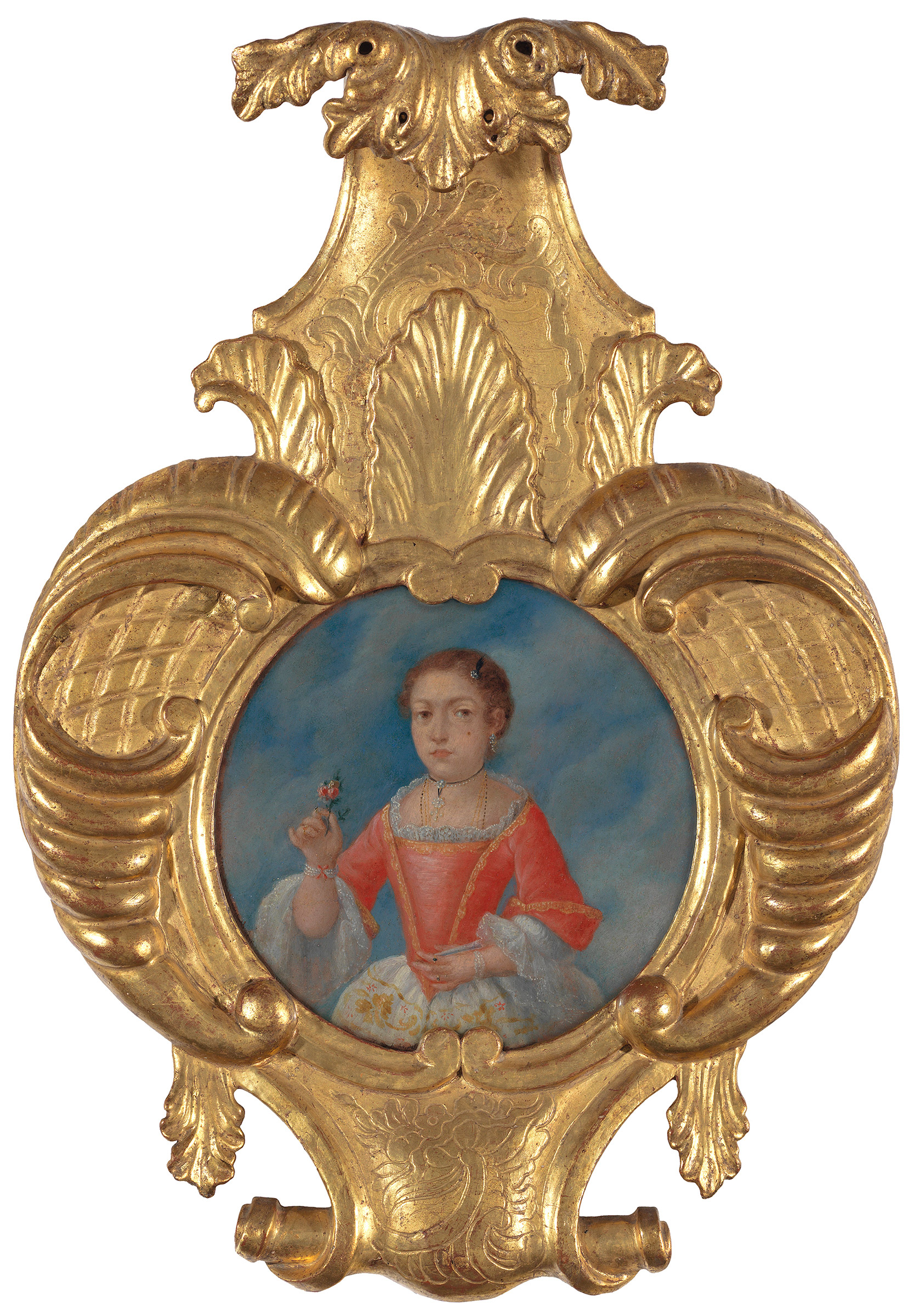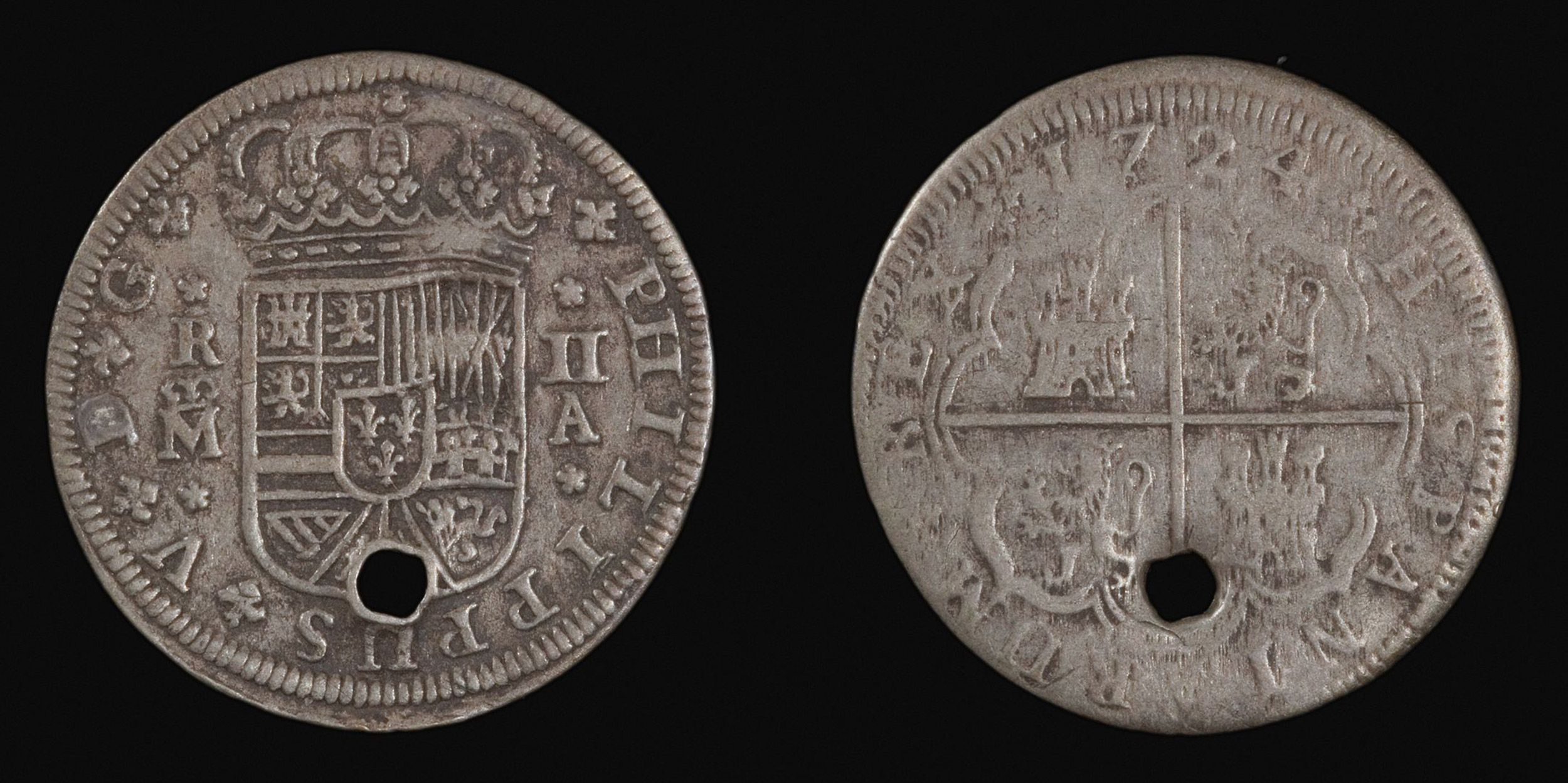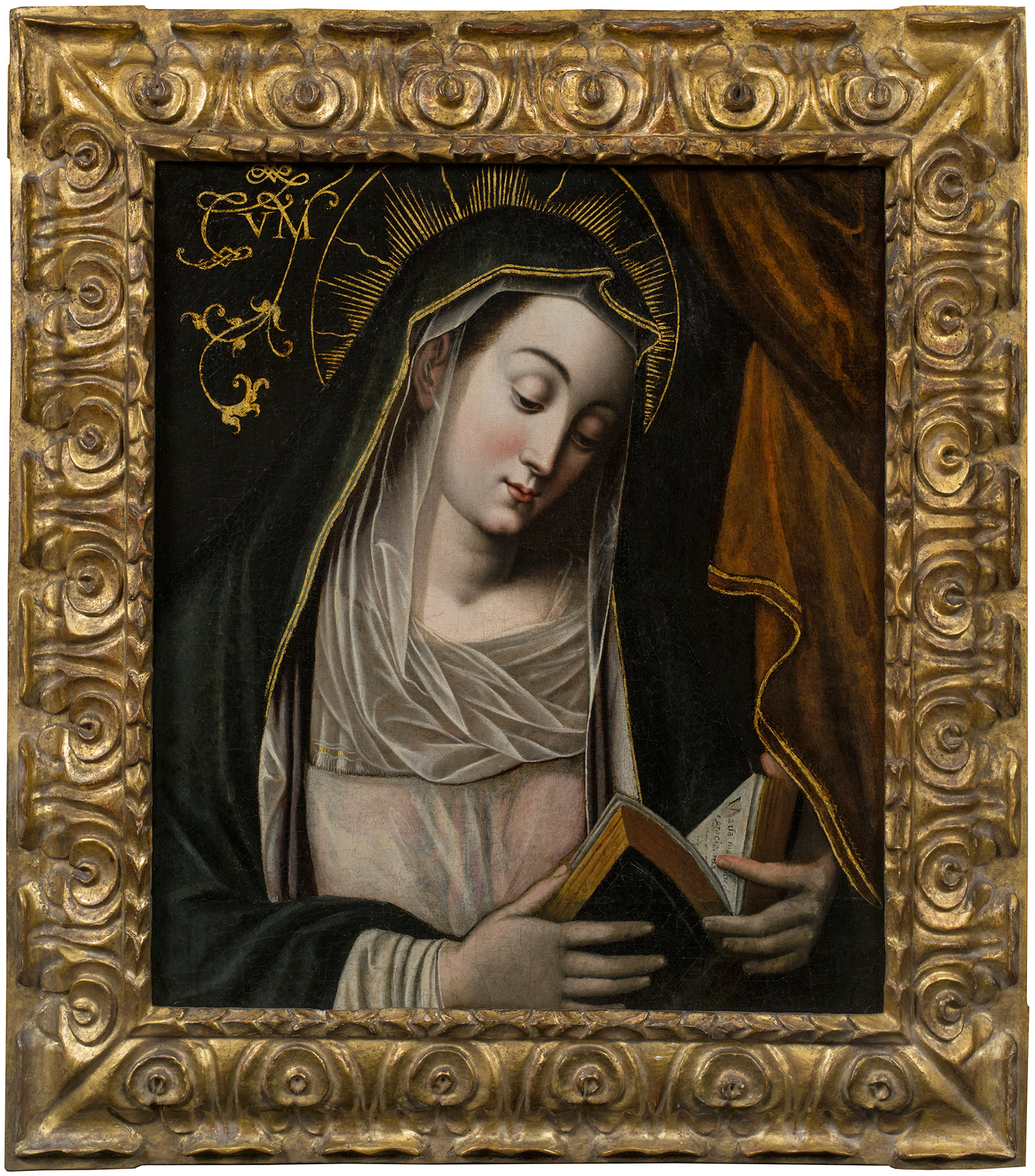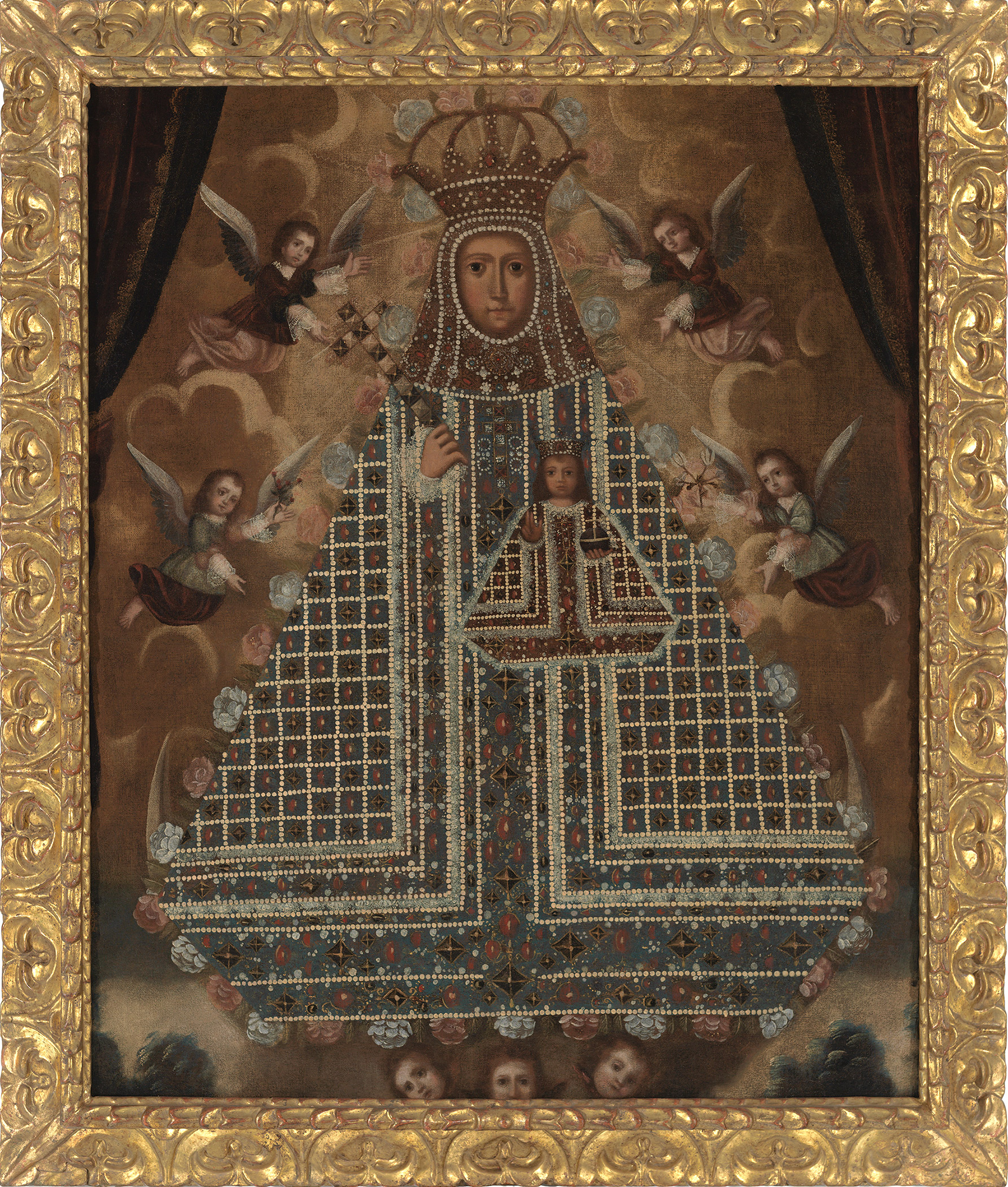Deep roots of multicultural American art
New Harvard Art Museums show explores interactions between European, Indigenous, African civilizations in works from Spanish Empire

“Portrait of Petronila Méndez” (1763) by Diego Antonio de Landaeta. Oil on panel. Carl & Marilynn Thoma Collection.
Courtesy of the Carl & Marilynn Thoma Foundation; photo by Jamie Stukenberg
What was the first European-influenced American art? For many the go-to might be Colonial artists, like painter John Singleton Copley or silversmith Paul Revere. But a new show at the Harvard Art Museums delves deeper, looking at the earlier interactions and confrontations between European, Indigenous, and African civilizations in this hemisphere and the works blending different cultures and faiths that emerged.
“From the Andes to the Caribbean: American Art from the Spanish Empire,” on view through July 30, is organized around three themes — religion as politics; hybrid and syncretic identities; and wealth, luxury, labor — and centers on paintings, from religious iconography to intimate portraits.

Incorporating 26 works from the Carl and Marilynn Thoma Foundation together with pieces from the Harvard Museums’ collections, the exhibit also includes silver and mahogany objects, as well as one explanatory case tracing the history and use of cochineal, the pigment derived from a South American beetle that gave so many of these pieces their rich red.
Dating from 1600 to about 1860, the works on display range from what curator Horace Ballard described as “high Renaissance” (“La Virgen María leyendo/Virgin Mary Reading”) to the emergence of a distinctive new style (in “Saint Isidore the Farmer”) depicting a clearly mixed-race saint as well as indigenous farmers being helped by the saint’s angels.
“The beauty of these icons is deeply political,” said Ballard, the Theodore E. Stebbins Jr. Associate Curator of American Art. That early Virgin Mary, for example, is attributed to Mateo Pérez de Alesio, who assisted Michelangelo on the Sistine Chapel. In 1583, he sailed to Lima, in what was then known as the Viceroyalty of Peru (which spanned most of South America’s west coast), where he trained Indigenous and Afro-diasporic artists to paint icons. “I wanted to tell that story of trans-Atlantic relationships,” said Ballard. “But I also wanted to, from the very first image, show that embedded Afro-Indigenous presence.”
For Ballard, the connection is personal. Introducing the show, his first major exhibition since joining the museums in 2021, the curator explained how his Virginia originally had him counting European influence from 1607 and the establishment of Jamestown. His work as a scholar and curator taught him to look back to 1492 and the arrival of the Spanish, and their discovery of silver soon after, which would fund the expansion of their empire.
“For my first exhibition here at the Harvard Art Museums, it was deeply, deeply important to reframe the understanding of American art as not beginning with Jamestown or the pilgrims in 1620 but beginning with the Spanish Empire,” said Ballard.


“Virgin Mary Reading,” (circa 1590–1610), attributed to Mateo Pérez de Alesio. Oil on canvas with gold (gold likely added in the 18th century). “Our Lady of Guadalupe at Extremadura” (1730–80) by Diego de Ocaña. Oil on canvas. Photo by Jamie Stukenberg; both from Carl & Marilynn Thoma Collection.
Courtesy of the Carl & Marilynn Thoma Foundation
Set against walls of cochineal red (for the religious art), white (for that focused on hybrid and syncretic identities), and a dusky blue (wealth, luxury, labor), the pieces showcase a breadth of purpose and feeling, from the intimate “Portrait of Petronila Méndez,” depicting the 9-year-old daughter of a wealthy Afro-Indigenous family, to the stylized “Nuestra Senora de Guadalupe en Extramadura/Our Lady of Guadalupe at Extramadura.” Painted by Diego Antonio de Ladaeta, an artist of African descent, young Petronila is a sweet-faced little girl bedecked in pearls, while “Our Lady of Guadalupe,” revered both in Spain and in the Americas, takes on an almost sculptural quality in this depiction by an unnamed artist, her body and garment patterned in a grid that may have been meant to evoke an icon’s ceremonial garment.
While many of these artists were of Indigenous or Afro-diasporic heritage, the faces pictured tend toward the white and rosy-cheeked. Some of that, the curator explained, is because of the consistency of museum lighting on pieces meant either for churches or home viewing. “With candlelight, this skin would actually go from white to more bronze and gold,” he said. “It would flicker; it would change. The red would come forward. These faces would modify. And so, in certain ways, the way that we see paintings today actually makes them lighter than they would be read at that time.”
However, the prejudices and preferences of patrons either in the new Spanish Empire or back in Europe also played a role. “Though the artists are Afro-Indigenous and might have a range of skin tones, they know what’s going to sell,” said Ballard. “The people who would buy these things were mostly going to be Creoles,” people of mixed ancestry born in the New World, “or people who were born in Europe. A lot of these works were also sent back to Europe as fundraisers.
“This is the moment when whiteness is becoming a construction,” said Ballard. “And one of the great gifts of working on this show is to antagonize that construction of white supremacy through a different lens. Not just an Anglo American or an Anglo-Colonial lens, but through a Spanish lens in which there are, still to this day, many more ethnic terms.”




